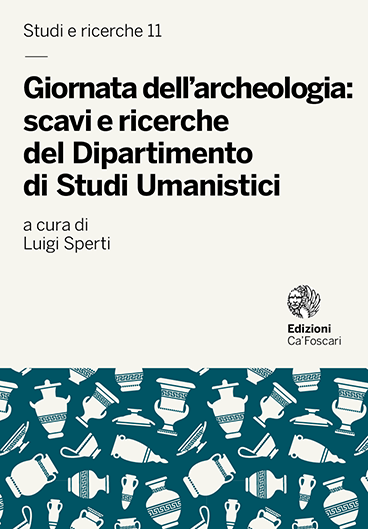Collana |
Studi e ricerche
Volume 11 | Miscellanea | Giornata dell’archeologia: scavi e ricerche del Dipartimento di Studi Umanistici
Giornata dell’archeologia: scavi e ricerche del Dipartimento di Studi Umanistici
open access-
a cura di
- Luigi Sperti - Università Ca’ Foscari Venezia, Italia - email orcid profile
Abstract
Dalle ricerche sugli insediamenti dell’VIII millennio nella costa nord-occidentale del Pakistan ai pluridecennali scavi della missione italiana a Festòs e Haghia Triada; dalle attività di scavo e le ricerche epigrafiche a Jebel Barkal in Sudan al progetto nella regione di Shida Kartli in Georgia; dalle indagini a Pompei ed Aquileia, ai progetti che riguardano la Laguna di Venezia, o un sito della gronda lagunare come Altino; dallo studio della cittadella di ʿUrfa in Turchia, alle indagini sui relitti di navi veneziane rinvenuti lungo le coste della Croazia, l’archeologia cafoscarina copre un orizzonte geografico di inusitate dimensioni, e un arco cronologico che va dalla preistoria sino all’età contemporanea.
Keywords Citadel • Frontier • Roman port • Verona • Late Roman cemetery • Sudan • Early navigation • Sea-level changes • Syria • Society • Medieval Age • Shipwreck • Photogrammetry • Radiocarbon dating • Bronze Age • Roman Sculpture • Military architecture • Islamic fortification • Indus delta • Upper Mesopotamia • Archaeology • Egypt • Islamic military architecture • Museums • Underwater archaeology • Lagoon • Aquileia • Mangroves • Egyptian collections • Roman Private Architecture • Islamic building techniques • Shell middens • Roman Verona • Caucasus • Pakistan • Piazza Corrubbio • Pompeii garum • Altinum • Georgia • Pompeii ceramics • Arabian Sea coast • Jebel Barkal • Venice • Archaeology of Gallia Cisalpina
Permalink http://doi.org/10.14277/978-88-6969-189-8/SR-11 | e-ISBN 978-88-6969-189-8 | ISBN (PRINT) 978-88-6969-204-8 | Pubblicato 08 Novembre 2017 | Lingua it, en
Copyright © 2017 Luigi Sperti. This is an open-access work distributed under the terms of the Creative Commons Attribution License (CC BY). The use, distribution or reproduction is permitted, provided that the original author(s) and the copyright owner(s) are credited and that the original publication is cited, in accordance with accepted academic practice. The license allows for commercial use. No use, distribution or reproduction is permitted which does not comply with these terms.
Premessa
- Premessa
- 08 Novembre 2017
Capitoli
-
Exploiting Mangroves and Rushing Back Home
Fifteen Years of Research Along the Northern Coast of the Arabian Sea, Pakistan - 08 Novembre 2017
-
Archeologia del Vicino Oriente antico a Ca’ Foscari
Dalla Mesopotamia al Caucaso - 08 Novembre 2017
-
Egittologia cafoscarina
Dal Veneto alla valle del Nilo - 08 Novembre 2017
-
Ca’ Foscari a Creta
La Missione di Festòs e di Haghia Triada - 08 Novembre 2017
- Ricerche e studi ad Altino e nei Musei archeologici del Veneto
- 08 Novembre 2017
-
Archeologia per la storia di un mito
Le ricerche del Laboratorio di Archeologia Medievale - 08 Novembre 2017
-
Insediamenti fortificati del Vicino Oriente
La cittadella di ‘Urfa (Turchia) - 08 Novembre 2017
- Dodici anni di formazione in archeologia marittima a Ca’ Foscari
- 08 Novembre 2017
